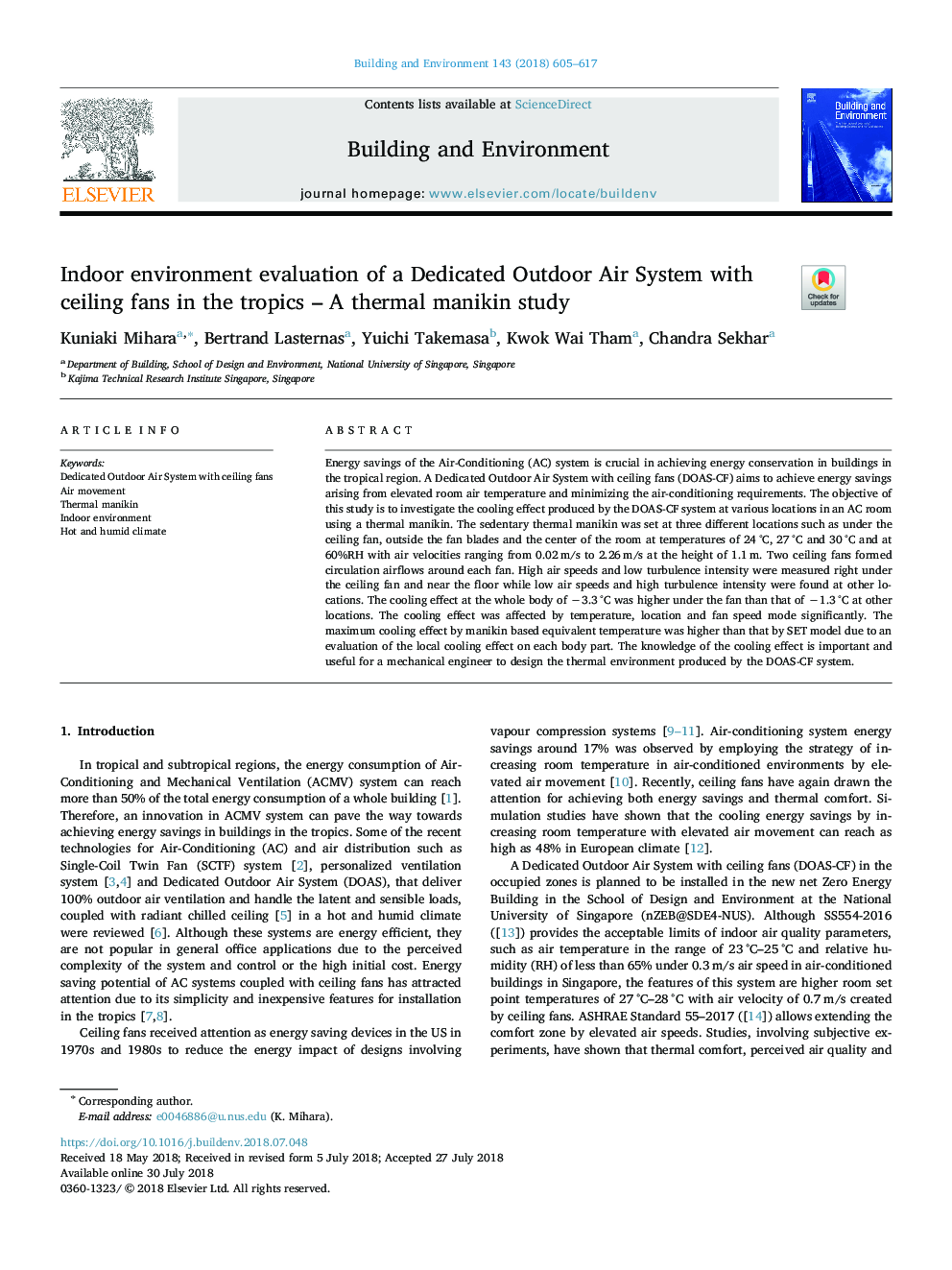| Article ID | Journal | Published Year | Pages | File Type |
|---|---|---|---|---|
| 6696692 | Building and Environment | 2018 | 13 Pages |
Abstract
Energy savings of the Air-Conditioning (AC) system is crucial in achieving energy conservation in buildings in the tropical region. A Dedicated Outdoor Air System with ceiling fans (DOAS-CF) aims to achieve energy savings arising from elevated room air temperature and minimizing the air-conditioning requirements. The objective of this study is to investigate the cooling effect produced by the DOAS-CF system at various locations in an AC room using a thermal manikin. The sedentary thermal manikin was set at three different locations such as under the ceiling fan, outside the fan blades and the center of the room at temperatures of 24â¯Â°C, 27â¯Â°C and 30â¯Â°C and at 60%RH with air velocities ranging from 0.02â¯m/s to 2.26â¯m/s at the height of 1.1â¯m. Two ceiling fans formed circulation airflows around each fan. High air speeds and low turbulence intensity were measured right under the ceiling fan and near the floor while low air speeds and high turbulence intensity were found at other locations. The cooling effect at the whole body of â3.3â¯Â°C was higher under the fan than that of â1.3â¯Â°C at other locations. The cooling effect was affected by temperature, location and fan speed mode significantly. The maximum cooling effect by manikin based equivalent temperature was higher than that by SET model due to an evaluation of the local cooling effect on each body part. The knowledge of the cooling effect is important and useful for a mechanical engineer to design the thermal environment produced by the DOAS-CF system.
Related Topics
Physical Sciences and Engineering
Energy
Renewable Energy, Sustainability and the Environment
Authors
Kuniaki Mihara, Bertrand Lasternas, Yuichi Takemasa, Kwok Wai Tham, Chandra Sekhar,
